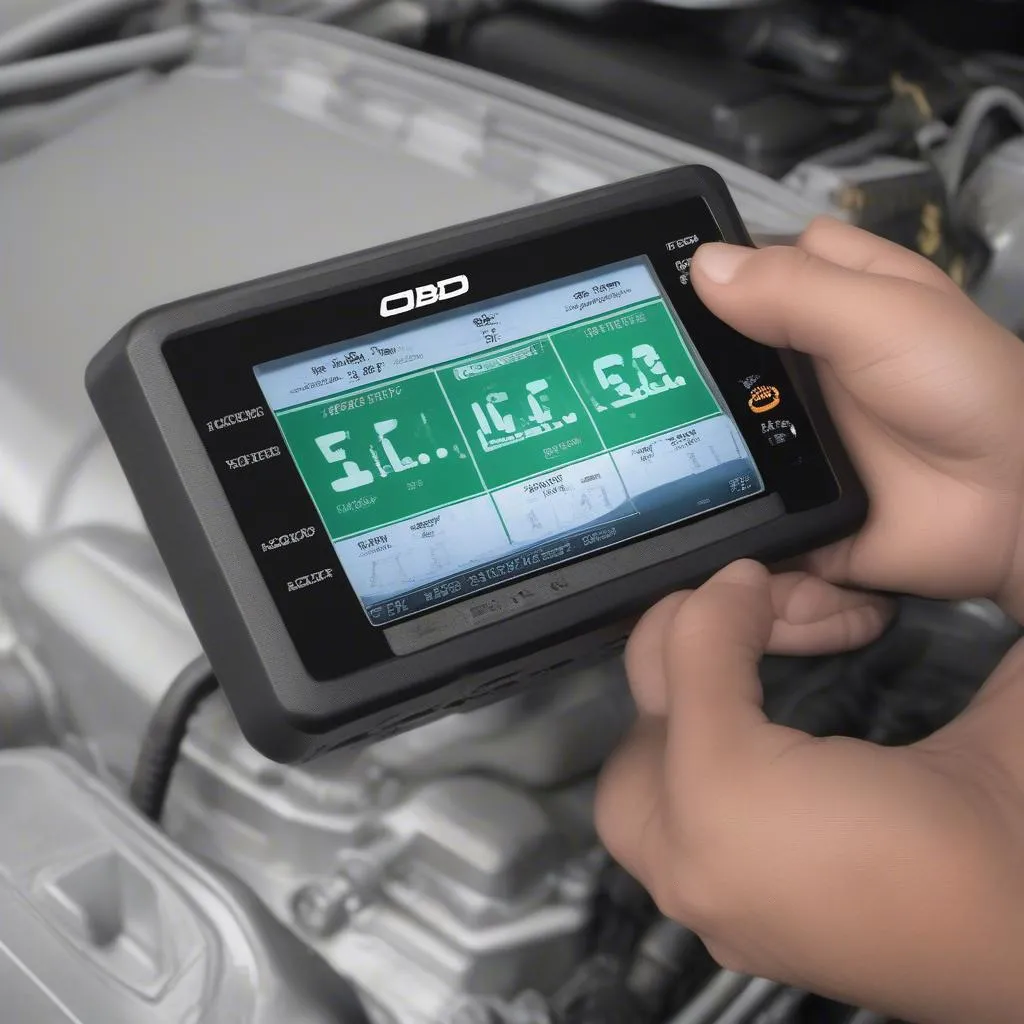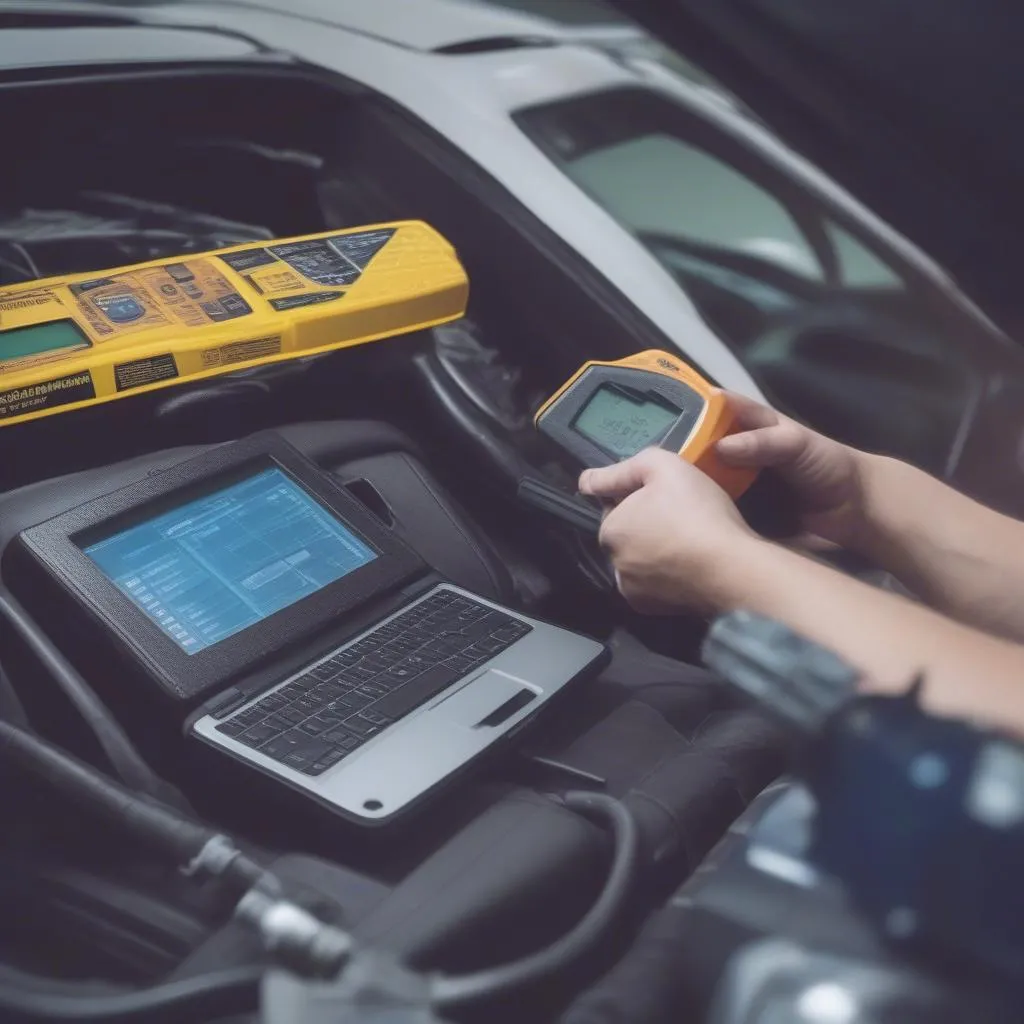Have you ever been stuck on the side of the road, your car sputtering and refusing to start? You pull out your phone, hoping to find a solution, but all you get is a string of error codes. It’s at times like these that you realize the importance of a good OBD scan tool. These handy devices can translate those cryptic codes into something you can understand, allowing you to troubleshoot problems and potentially save a lot of money on costly repairs.
What is an OBD Scan Tool and Why Do I Need One?
An OBD (On-Board Diagnostics) scan tool is a device that connects to your car’s computer system and reads data stored within it. This data can include everything from engine performance and fuel consumption to emissions levels and sensor readings. For those who are not mechanics, a scan tool is an essential tool for diagnosing car problems, identifying fault codes, and even resetting the “Check Engine” light.
Why is it Important?
- Diagnosing issues: Scan tools provide a detailed look into your car’s health, giving you a clear picture of what’s wrong.
- Saving money: Early diagnosis can help you avoid costly repairs by catching issues before they escalate.
- DIY repairs: For enthusiasts, a scan tool empowers you to diagnose and fix minor problems yourself.
Choosing the Best OBD Scan Tool: Factors to Consider
There are a myriad of OBD scan tools available, ranging from basic budget-friendly options to professional-grade tools designed for serious mechanics. Here’s a breakdown of essential factors to consider when choosing the right tool:
1. Compatibility:
- OBD-II vs. OBD-I: Most cars made after 1996 are compatible with OBD-II standards. However, older vehicles might require an OBD-I compatible tool.
- Vehicle Make and Model: Some scan tools are designed for specific car brands or models. Ensure the tool is compatible with your vehicle.
- Supported Protocols: Different scan tools support various communication protocols. Check if the tool you’re interested in supports your car’s specific protocols.
2. Features:
- Code Reading and Clearing: All scan tools should be able to read and clear diagnostic trouble codes (DTCs).
- Live Data Streaming: This feature allows you to monitor real-time sensor readings, providing valuable insight into your car’s performance.
 OBD Scan Tool Displaying Live Data
OBD Scan Tool Displaying Live Data - Advanced Features: Some scan tools offer advanced features like bi-directional control, allowing you to actuate components like solenoids and actuators, or perform special functions like reprogramming key fobs.
- Data Logging: This feature allows you to record data over time, which can be helpful for identifying intermittent problems.
3. Ease of Use:
- User Interface: A user-friendly interface is crucial, especially for novice users. Look for tools with clear menus, intuitive navigation, and easily understandable information.
- Display: Consider a tool with a large, easy-to-read display, especially if you need to view multiple data streams simultaneously.
- Software Updates: Make sure the tool’s manufacturer provides regular software updates to ensure compatibility with new car models and features.
4. Cost:
- Budget-Friendly Options: Simple code readers are available for under $50, perfect for basic diagnostics and clearing error codes.
- Mid-Range Tools: These offer a wider range of features, including live data streaming, for around $100-$300.
- Professional-Grade Tools: High-end tools designed for mechanics can cost over $1,000 and offer advanced features like bi-directional control and programming capabilities.
Finding the Perfect OBD Scan Tool for Your Needs
You can find a comprehensive list of some of the best OBD scan tools for various needs and budgets here: [link to “what-is-a-good-obd-scan-tool/”]. It’s important to consider your individual needs and budget before investing in a tool. A basic code reader might suffice for occasional use, while a professional-grade tool is necessary for a mechanic.
How to Use an OBD Scan Tool: A Quick Guide
Using a scan tool is generally straightforward. However, specific steps might vary depending on the tool’s interface and your car’s model.
- Connect the Tool: Plug the scan tool’s connector into the OBD-II port, typically found under the dashboard, near the steering column.
- Turn the Key: Turn the ignition key to the “ON” position, but do not start the engine.
- Read the Codes: The tool will automatically scan for diagnostic trouble codes.
- View the Data: Browse the data displayed by the tool, including live data streams, fault codes, and sensor readings.
- Clear the Codes: Once you’ve diagnosed the problem, you can clear the fault codes using the tool.
FAQs
- Can I use an OBD scan tool on any car? Most OBD scan tools work with vehicles made after 1996. Older cars might require a specialized tool.
- What are the best OBD scan tools for DIY repairs? A mid-range tool with live data streaming capabilities is a good choice for DIYers.
- Do I need a specific tool for European cars? Yes, some European cars might require a specialized tool to access their diagnostic systems.
- What are some common car issues that an OBD scan tool can help diagnose? An OBD scan tool can help diagnose engine problems, transmission issues, sensor malfunctions, and electrical problems.
Need help choosing the right OBD scan tool or need assistance with diagnostics? Contact our team at Whatsapp: +84767531508 for 24/7 support.
Discover More:
- [link to “what-good-obd-scan-tool/”]
- [link to “good-obd-ii-scan-tool/”]
To help illustrate the process, here’s a visual representation of using an OBD scan tool:
 Using an OBD Scan Tool
Using an OBD Scan Tool
The right OBD scan tool can empower you to take control of your car’s maintenance. By understanding the various features and factors to consider, you can make an informed decision and choose the tool that best suits your needs.
 Types of OBD Scan Tools
Types of OBD Scan Tools


